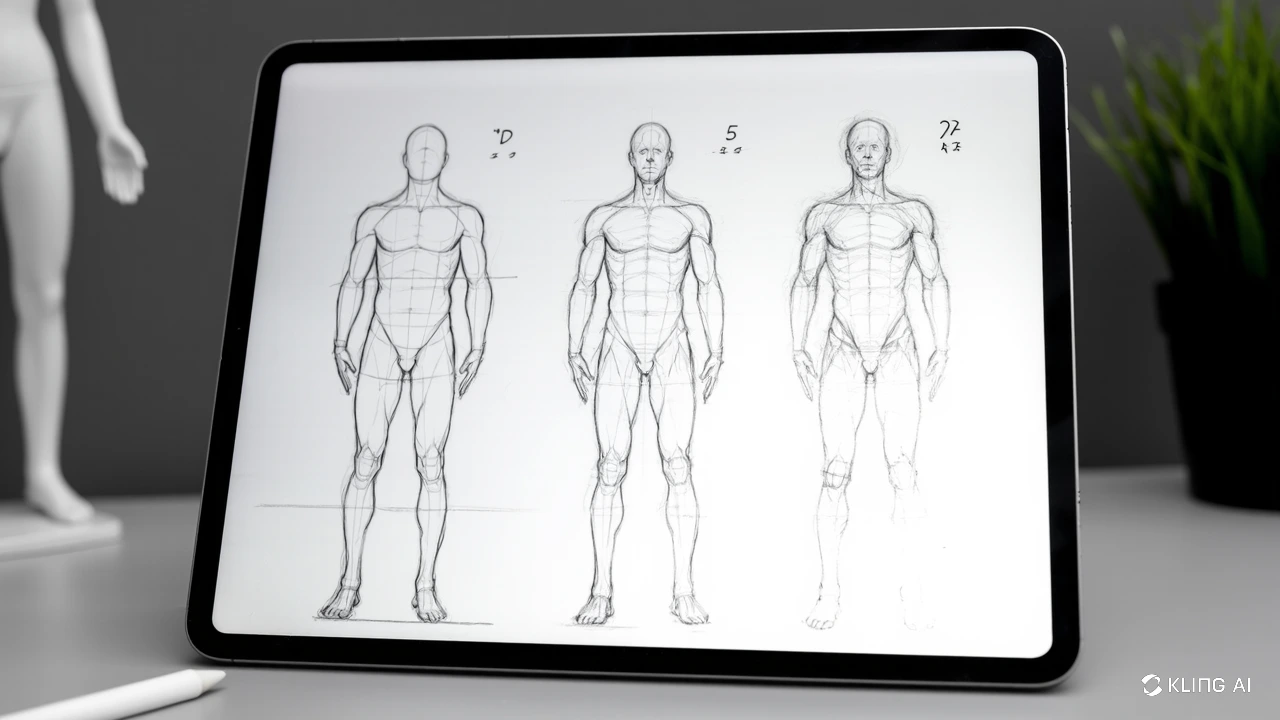How to Draw a Person: Complete Guide for Beginners

🧍 How to Draw a Person – The Complete Beginner’s Guide to Human Figure Drawing (2025 Edition)
Learning to draw the human figure is one of the most rewarding and foundational skills in art. Whether you’re designing characters for animation, comics, or fine art, understanding human anatomy, proportion, and gesture is key to creating realistic, expressive, and dynamic figures.
This comprehensive 2025 guide covers everything you need to draw people from imagination or reference—using modern proportion systems, simplified anatomy, motion techniques, and professional digital workflows.
🧠 Section 1: Modern Human Proportion Systems
Before drawing detail, you must master proportion. A well-proportioned figure provides structure and believability to your art.
📏 Standard Measurement Systems:
7.5-heads tall: Classic figure drawing method
8-heads tall: Heroic/comic book stylization (used in anime, superhero design)
6.5–7 heads tall: Realistic adult average (good for slice-of-life characters or realism)
📐 Key Landmark Measurements:
Shoulder width = approx. 2 head widths
Waist = ~1 head width
Hips slightly wider than waist, especially in feminine figures
Leg length = approx. 4 head heights from crotch to feet
Elbows align with waist; wrists align with hip bones
Pro Tip: Use proportional grids when drawing from reference for accuracy.
🌀 Section 2: Gesture Drawing & Mannequinization
Gesture drawing captures the essence of motion and energy before adding structure.
🖊 The Line of Action:
A single fluid line that defines the body's motion
Use C-curves and S-curves to show weight shifts and balance
Arms and legs follow secondary curves based on the spine's gesture
🧱 Mannequinization for Simplicity:
Ribcage: Draw as a tilted egg
Pelvis: Bowl or wedge shape
Limbs: Tapered cylinders with directional flow
Head: Ball with jaw box
These simplified volumes allow you to rotate, tilt, and pose figures in 3D space.
💪 Section 3: Basic Anatomical Construction
Understanding muscle structure helps bring life and realism to your figures—even in stylized art.
🧩 Simplified Muscle Groups:
Torso: Think of it as a “peanut” or hourglass to show form
Arms: View as a “bicep-tricep sandwich” that wraps the bone
Legs: Use a diamond shape for the thigh gap (especially in athletic poses)
Neck & Traps: Connect skull to shoulders in a triangular flow
⚙️ Joint Mechanics:
Mark pivot points with circles (shoulders, elbows, knees)
Indicate range of motion with arcs
Use overlapping shapes for foreshortening when drawing limbs toward/away from the viewer
⚡ Section 4: Dynamic Posing Techniques
Creating believable, action-filled poses is all about understanding weight, force, and balance.
🎯 Weight Distribution:
Identify the center of gravity (usually between the feet)
Load-bearing legs are straight and firm; free limbs are relaxed
Use hip-to-shoulder tilt contrast for expressive poses
💥 Action Lines & Flow:
Apply the Force Drawing method:
Start from hips → spine → shoulders → limbs
Indicate torque and twist with opposing curves
Add counterbalance elements like arm swing or tail movement (for creature design)
💻 Section 5: Digital Figure Drawing Workflow (2025 Tools & Tips)
Digital tools allow for powerful flexibility and iteration. Here's how professionals approach figure drawing digitally:
🖥️ Layer-by-Layer Drawing Process:
Gesture Layer – Loose, dynamic action lines
Construction Layer – Use geometric forms to block out body volumes
Anatomy Layer – Refine muscle placement and clean up the torso/limbs
Details & Clothing – Add face, hair, folds, accessories
Polish & Lighting – Enhance shadows, highlights, and rim lighting
🎨 Brush Techniques:
Use pressure-sensitive brushes for expressive line control
Add texture brushes to suggest fabric, skin, or hair
For cell shading: base > multiply shadow > screen/highlight
📱 Software Recommendations:
Procreate: Great for gesture + dynamic poses
Clip Studio Paint: Advanced vector lines + 3D pose reference models
Krita: Free alternative with full brush customization
Photoshop: Ideal for final polish, rendering, and layering effects
Bonus Tip: Use 3D anatomy apps (like ArtPose or MagicPoser) to study rotation and body mechanics in real-time.
📌 Practice Exercises to Build Figure Drawing Confidence
5-Minute Gesture Sessions: Use timed poses to warm up
Draw the Same Pose in 3 Styles: Realistic, anime, cartoon
Pose Memory Game: Look at a pose, then draw it from memory
Dynamic Composition Drills: Place 2+ figures in one scene with interaction
🧠 Final Thoughts: Learn to Draw People with Confidence
Learning to draw people is a lifelong skill that unlocks powerful visual storytelling. From simplified mannequin forms to detailed musculature, from subtle gestures to bold hero poses—this guide has covered everything a beginner needs to get started in 2025.
With daily practice, reference study, and consistent observation, you’ll gain the ability to draw people in motion, from imagination, and with true emotional depth.
So grab your pencil or tablet—and bring your characters to life, one gesture at a time.